Last Sunday, March 13th over 12,000 cross country skiers came together to race and participate in the 37th annual Cross Country Ski Marathon in Engadin, Switzerland.
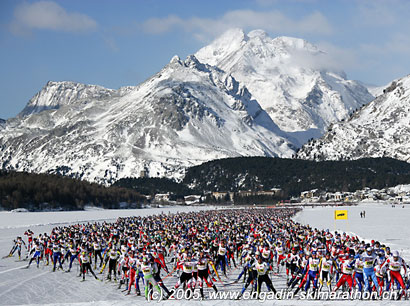
At an altitude of 2000 metres, the athletes raced each other under beautiful clear skies, through forests and across frozen mountain lakes, with the toughest challenge over 30 km into the marathon; a brutal uphill climb at 37 km, with 5 km left to the finish.
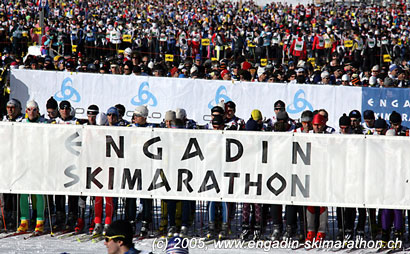
Skiiers wait at the starting line to start the 42 km race
The race traditionally allows for both skating and classic cross country entries. Overall most participants ski in the newer skating style. Traditionally a male dominated marathon, there were a total of 1000 women participants this year which was an increase over former years. Athletes in both mens and womens classes ranged from elite to “recreational” skiiers and came from all over the world to race in this historic event. This year, Switzerland and Germany topped the scales with over 8000 native Swiss participants and 1400 Germans racing. In addition to these, athletes from nations such as Russia, Italy, Monaco, Lichtenstein, Great Britain, Belgium, the Netherlands, Canada, the USA and even Brazil made the trip to this beautiful mountain area to race in the marathon.
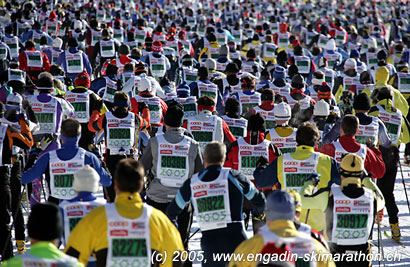
First off the line were the elite skiiers in the men’s and women’s classes at 8:40 am, just as the sun was peaking through the mountains. After this, groups were started at 10 minute intervals, with the main groups of “recreational” skiiers taking off at 9:20 am. I was there watching, and saw the explosive, aggressive start made by the elite racers. I also saw the thousands of skiiers with later start times doing warm up exercises to ward off the cold, and then race through the start as the sun warmed up the air and provided for a beautiful crystal clear day. It is an incredible sight to see, watching the thousands of skiiers start in the small Swiss mountain town of Maloja, making their way over the snowy slopes to ski through the town of St. Moritz (27 km mark). The last kilometers of the race included the gruelling uphill climb, locally known as the “Golan Heights”. Physically, and by this time mentally drained athletes who have already raced over 36 km of challenging terrain, must at this point race up the steepest ascent of all. After this, they ski the final 5 km to cross the finish line in the town of S-Chanf.
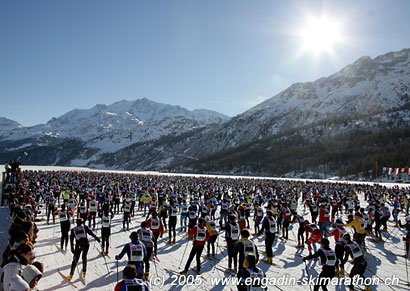
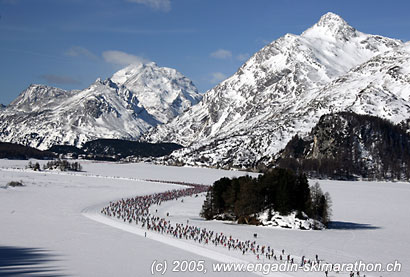
For european rowers, cross country skiing is a crucial part of building the traditional winter base for the coming season ahead. The German sweep rowers and scullers head to altitude camps every year over Christmas and New Year’s for intensvie cross-country skiing workouts in the mountains. It provides them with the ideal base to build on in the season ahead. The training strategy includes returning to altitude at least one more time during the racing season itself, usually in the weeks before the World Championships to build on the endurance acquired during the winter months.
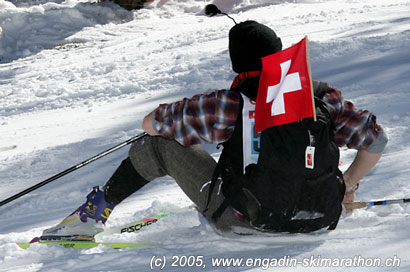
Gunda Reimers, 1997 World Champion in the lightweight women’s quad and a veteran of the German elite rowing scene in various boat classes, also raced in the marathon. I asked Gunda what she thought about using cross country skiing as a cross training alternative for rowing during the winter months. Here are some of her comments on the benefits of cross country;
"Cross-country skiing (in German, “ski langlauf”), is a great form of cross training. It trains the same muscle groups as in rowing and in the winter months when it’s either not possible or not warm enough to row, cross country skiing provides athletes with a good alternative.
One can see that even through the skating technique that we use so much today in cross country that so much strength is needed to effectively carry out the motion. It helps therefore to provide an optimal base during winter training. It is also very important in terms of motivation. It helps during the long winter months to do something other than always being on the erg, and the change of pace helps the athletes to prepare mentally for the season ahead. It really does help to get athletes motivated.”
“How did you feel about the marathon on Sunday?"
“I felt very well during the race, but I did notice that most likely due to the weather conditions, the warmer weather that we had on Sunday affected the snow very quickly. In the warmer weather I had to push a lot. With the conditions, I felt that I could have performed better technically, and that was lacking a bit during the race and definitely affected my pace."
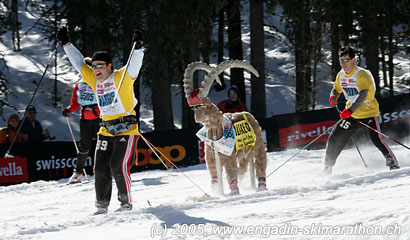
“We took a look at the times last year and saw that they were overall faster in 2004. Can you comment on that?”
“Yes, that’s right. Last year, the surface snow was harder packed on the course, and there was a tail wind. In comparison the course was much icier this year. So for the people that are not always out there on skiis, the conditions played an advantage in overall speed last year. Generally speaking, women also had a disadvantage in the race this year; the conditions were more suited to strength, and men in this sense had the advantage.”
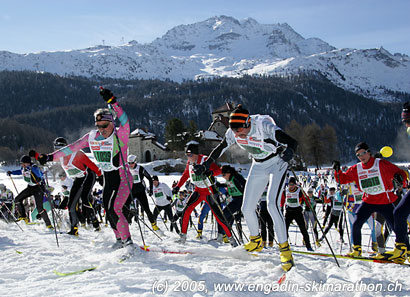
“When you were competing internationally, did you also use cross country skiing as a training alternative?”
“Yes, that started when I was rowing at the Rendsburg Ruderverein, and for 3 or 4 years we went to Norway every year, and then later to Austria and Switzerland. Since 1992, when I was at a training camp with Dr.Wolfgang Fritsch (Boardmember of the German Rowing Association, Professor of Sport), I learned the skating technique and made the switch from the classic to the skating style.”
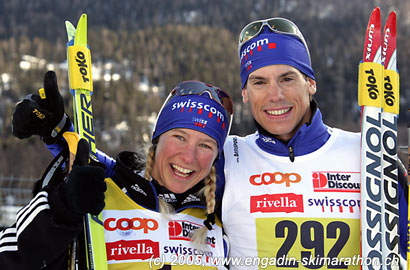
“Did you see advantages from using this for cross training?”
“Sure: I have since then competed 6 times in the Engadin Ski Marathon. It’s also lots of fun and is a super alternative in winter and helps out too in the summer if you are an in-line skater like myself. I think it’s an all round great cross training method.”
von:
Kathryn Jager
rudern1.de, 15.03.2005
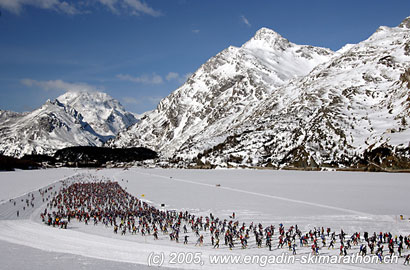

| 

